
Drama Content and Achievement Standards for the state of North Dakota. Updated 2000.
- Subject:
- Arts and Humanities
- Material Type:
- Primary Source
- Date Added:
- 03/21/2018

Drama Content and Achievement Standards for the state of North Dakota. Updated 2000.

'Blast from the Past' with Cleve Sellers. Program focuses on the culture of Australian aborigines. Host/interviewer Dighton Spooner speaks with Gulpilil and other Australians about music, ceremonies, instruments, costuming, and the requirements for the survival of Australia's aboriginal culture. Interviews touch upon offers from European companies to purchase tribal lands, Australia's attempts to restore its native culture, rules governing 'mixed blood' in Australian government, the impact of African American leaders on Australia, the creative force behind aboriginal cultures, and European repression of native cultural tradition. Additional program segments include two mime performances by Halim Adbur Rashid (Fred Johnson), 'Blast From the Past' (with an interview with Cleve Sellers, member of the Cornell University development staff), 'Information' on college preparatory services, 'Access' (on the services of the Council of Elders, Inc.), the 'Community Calendar,' and 'Commentary' by Producer Marita Rivero. Original air date estimated. Produced by Marita Rivero. Directed by Conrad White.

This course is an 8 Module:Introductory study of critical thinking and logic, with emphasis on argumentation, rhetoric, andproblem-solving.Examination of language, meaning, definition, fallacies, and arguments as theyoccur in academic and real-world settings (with an emphasis on online communication, media,and digital environments).Application of logic and critical thinking strategies to contemporaryissues and practical problem solving.
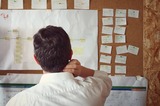
This course is an 8 Module:Investigation of ethical problems and solutions in contemporary business practice.Examination ethical theories and how to correctly use ethical decision-making frameworks to resolve issues dealing with personal, social, environmental, and corporate responsibility.Analysis of topics including personal morality in profit-oriented enterprises; codes of ethics; obligations to employees and other stakeholders; truth in advertising; whistleblowing and company loyalty; self and government regulation; the logic and future of capitalism; the changing responsibilities of the manager; and the need for awareness of social justice in management and business activities.

This course examines works of film in relation to thematic issues of philosophical importance that also occur in other arts, particularly literature and opera. Emphasis is put on film’s ability to represent and express feeling as well as cognition. Both written and cinematic works by Sturges, Shaw, Cocteau, Hitchcock, Joyce, and Bergman, among others, are considered. There are no tests or quizzes, however students write two major papers on media/philosophical research topics of their choosing.

Subject combines practical instruction, readings, lectures, field trips, visiting artists, group discussions, and individual reviews. Fosters a critical awareness of how images in our culture are produced and constructed. Student-initiated term project at the core of exploration. Special consideration given to the relationship of space and the photographic image. Practical instruction in basic black and white techniques, digital imaging, fundamentals of camera operation, lighting, film exposure, development, and printing. Open to beginning and advanced students. Lab fee. Enrollment limited with preference given to current Master of Architecture students.
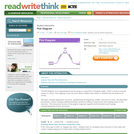
The Plot Diagram is an organizational tool focusing on a pyramid or triangular shape, which is used to map the events in a story. This mapping of plot structure allows readers and writers to visualize the key features of stories.

This article provides links to polar-themed arts and crafts activities.

This article features activity books and polar-themed children's literature for use in the elementary classroom.
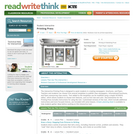
The interactive Printing Press is designed to assist students in creating newspapers, brochures, and flyers.
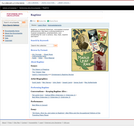
This site presents sheet music, essays, and video and sound clips related to ragtime. This distinctly American music appeared (in its published form) during the mid-1890s mainly in the South and Midwest, spread across the U.S. and to Europe, and influenced early jazz styles. Learn about Scott Joplin, one of the best known ragtime players. Hear segments of his classic Maple Leaf Rag, which helped spread the ragtime craze. See more than 100 pieces of sheet music.

Fundamentals of speaking, writing, listening, and reading of Spanish. Introduction to the culture of the Spanish-speaking world.

Fundamentals of speaking, writing, listening, and reading of Spanish. Introduction to the culture of the Spanish-speaking world.

Development of speaking, writing, listening, and reading proficiency in Spanish at the novice mid/novice high level. Culture of the Spanish-speaking world.
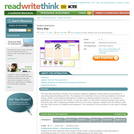
The Story Map interactive is designed to assist students in prewriting and postreading activities by focusing on the key elements of character, setting, conflict, and resolution.
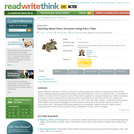
Stories and poems that have a familiar structure can create a supportive context for learning about the writing process, building students' background knowledge, and scaffolding their creation of original stories. In this lesson for students in second or late first grade, teachers help students explore the concepts of beginning, middle, and ending by reading a variety of stories and charting the events on storyboards. As they retell the stories, students are encouraged to make use of sequencing words (first, so, then, next, after that, finally). A read-aloud of Once Upon a Golden Apple by Jean Little and Maggie De Vries introduces a discussion of the choices made by an author in constructing a plot. Starting with prewriting questions and a storyboard, students construct original stories, progressing from shared writing to guided writing; independent writing is also encouraged.
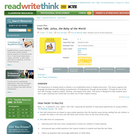
The importance of reading aloud to children is an established tenet of reading instruction. This lesson supports the language development and reading comprehension of kindergarten through second graders. Through the use of the text talk strategy, students explain, develop, and expand story ideas. This lesson is designed to help students learn how to gain meaning from words that are taken out of their original context.
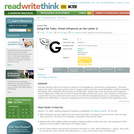
Folk tales and fairy tales are of interest to and part of the language arts curriculum for young learners. This lesson supports the study of this genre and the study of irregular patterns and letter-sound relationships related to decoding and spelling. After reading the folk tale Jack and the Beanstalk, students discuss the word giant and its beginning sound. Students then create their own lists of words that begin with the same sound. Then, students are introduced to words with the soft g sound and create a new list of words with this beginning sound. As a culminating activity, students work individually or in groups to categorize animal names into groups according to their beginning g sound.

Evidence Choice Matrix
HS Proficient
Performance Standard
VA:Pr6.1.HSI - Analyze and describe the impact that an exhibition or collection has on personal awareness of social, cultural, or political beliefs and understandings.
This matrix can be used to provide students with some options as to the ways in which they can provide evidence of learning toward a grade level standard in art.
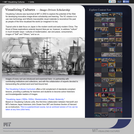
Visualizing Cultures was launched at MIT in 2002 to explore the potential of the Web for developing innovative image-driven scholarship and learning. The VC mission is to use new technology and hitherto inaccessible visual materials to reconstruct the past as people of the time visualized the world (or imagined it to be).
Topical units to date focus on Japan in the modern world and early-modern China. The thrust of these explorations extends beyond Asia per se, however, to address "culture" in much broader ways—cultures of modernization, war and peace, consumerism, images of "Self" and "Others," and so on.